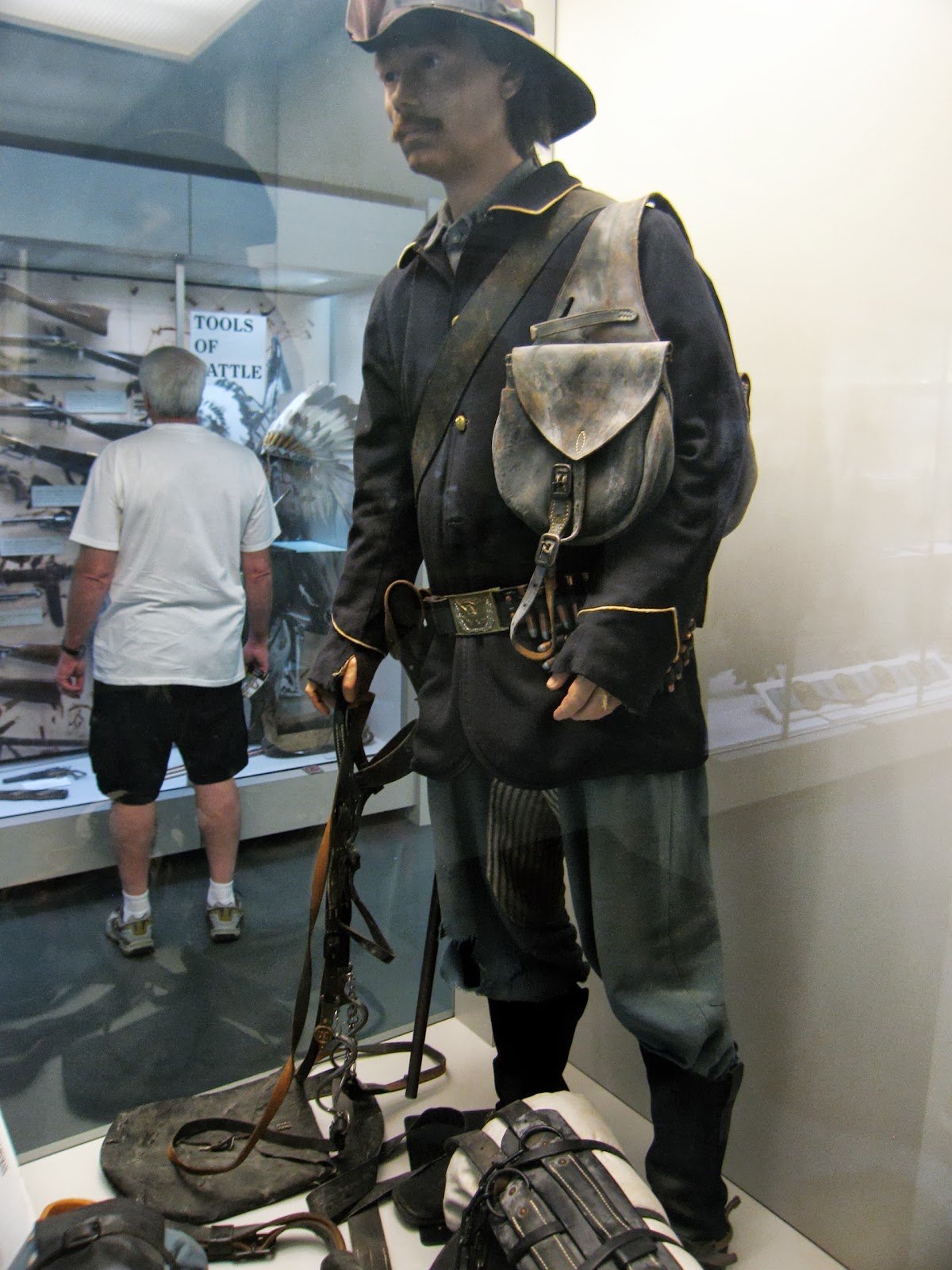We had a chance to
visit this memorial/battlefield last year when we returned from San Francisco
and the US Open. But someone told us
that it was a waste, in that the only there is a marker in the middle of a
field. Well, there is a marker in the field
(actually on top of a hill) surrounded by fields.
Just west of the
memorial marker and down the slope towards the river (Platte I think), are the
markers where the soldiers were found in their approximate positions. The area is encompassed by an iron fence, and
is considered part of the national cemetery. Down behind the visitor center are the other markers from other wars.
A few paces to the
northwest is a memorial dedicated to the Native Americans. A recent addition to the memorial was the
iron architecture seen just over the heads of the folks walking down to view
it.
As you can read,
several tribes had banded together for the battles here in the Little Big Horn
area. And, there was more than just the
last stand. As in all battles it seems, there
were miscommunications, timing of troop movements, and other factors not
planned for that spelled defeat for the Calvary.
Throughout the
battlefield park there these markers, both Calvary and Native Americans. White designated the Calvary and red the
Indians. And the markers were all along
the road for about 5 miles. In fact, a
day earlier near the end of the road, there a separate battle.
Down the hill to the
west approaching the river and near the encamped Native Americans, is the
location of this named battle. I always
thought that Custer and his men were the only soldiers here, but alas, we again
learned more the specifics of some general knowledge of our past history. I guess this was in the history books, but I
just don’t remember this aspect of the events surrounding Little Big Horn.
This a view from the
end of the road loop looking down to the southwest and the encampment of the
Native Americans. We could see why the
Native Americans loved this land. And of
course during this time frame, there were millions of buffalo making these
plains their home as well.
Looking northwest
near the end of the road we saw these three Pinto horses. There are many Native Americans who still
make this area home as the land has passed down through the generations. And the Pinto is still a favorite of these
descendants.
Inside the crowded
visitor center, we viewed a little of the history. Nancy got her cancellation stamp & color
sticker for her National Park Service Passport book. Every NPS park or monument just about, has
this stamp & sticker combination, which signifies a visit to the specific
park. Pretty neat, and she’s been doing
this now for almost four years on our journeys.
Sitting Bull was an
interesting person of character in our country’s history. From Wiki:
Sitting Bull (Lakota: Tȟatȟáŋka Íyotake in Standard Lakota
Orthography,[2] also nicknamed Slon-he or
"Slow"; c. 1831 – December 15, 1890) was a Hunkpapa Lakota Sioux holy man who led his people as a tribal chief during years of resistance to United States
government policies. He was killed by Indian
agency police on the Standing Rock Indian Reservation during an attempt to arrest him at a time when authorities feared that he
would join the Ghost Dance movement.
And after the Little Big Horn events, he travel the country making
appearances, joined a company that had him & other famous Americans of the
time, performed at shows far & wide.

Typical warrior of
the time in period dress…
…and the typical
soldier…
It was a very warm
(hot) day and the park was very crowded with visitors. We had to disconnect the Jeep as there was
not enough room to maneuver the big rig and the tow. It wasn’t easy parking her. But it happens frequently, and we just have
to deal with these little annoyances.
We again, learned
more of our wonderful history. It is so
gratifying to travel, see the wondrous handiwork of our Lord, and see firsthand
the evidences of our rugged yet momentous past.
So, if you want to learn a little more than what I’ve briefed here, just
Google Custer, Little Big Horn, Sitting Bull, Crazy Horse or other related
names & events surrounding this, the Last Stand, where 209 brave soldiers
& a handful of Native Americans are interred at this memorial. So, till our next blog, Joe & Nancy, the
RVing Beach Bums.













No comments:
Post a Comment